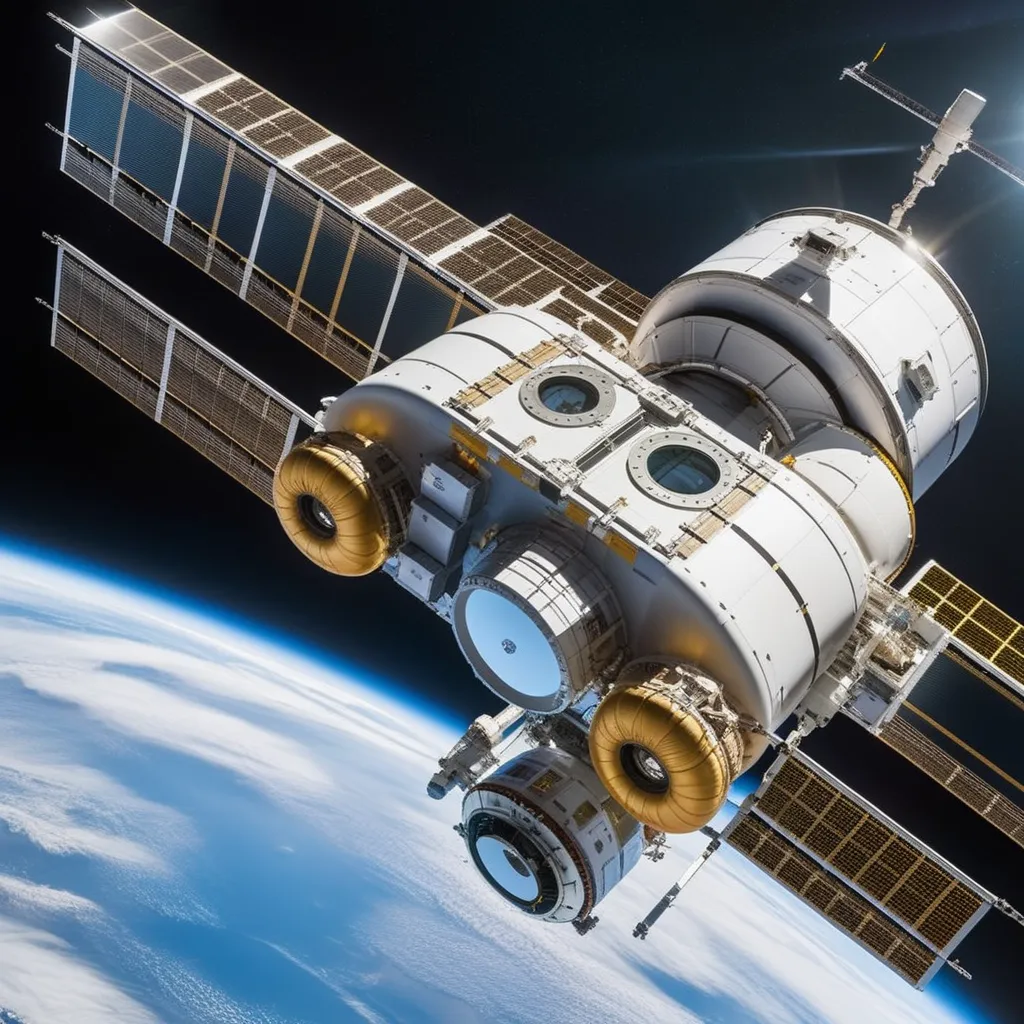Artificial Gravity Achieved in Space Laboratory
The idea of artificial gravity in space has been a dream since the dawn of space exploration. Imagine living and working in a space station where you could walk on the walls and ceiling, just like in your own home. It might sound like science fiction, but recent breakthroughs have brought us closer to making artificial gravity a reality. As someone who has been fascinated by space and its mysteries, I can't help but be thrilled by this achievement.

A Childhood Dream
I remember as a child, gazing at the night sky and dreaming about becoming an astronaut. The thought of floating weightlessly in space was both exhilarating and a little daunting. Back then, artificial gravity was something I could only imagine.
Personal Connection
One of my fondest memories is watching astronauts on television, floating effortlessly inside the International Space Station (ISS). It was like a window into a world beyond our planet.
The Challenge of Weightlessness
Living and working in microgravity presents numerous challenges for astronauts. Bone density loss, muscle atrophy, and the lack of a natural up-and-down orientation are just a few of the issues they face.
Personal Insight
I once tried to imagine what it would be like to live on the ISS for an extended period. The idea of not feeling the solid ground beneath my feet for months on end was both fascinating and a little unsettling.
The Promise of Artificial Gravity
Artificial gravity offers a solution to these challenges by simulating the gravitational forces we experience on Earth. It could revolutionize the way we live and work in space.
Spin It Up
One approach to creating artificial gravity is to spin a spacecraft or space station. Centrifugal force generated by the rotation creates a gravitational-like pull towards the outer rim.
Personal Discovery
When I first learned about this concept, I was intrigued by the simplicity of the idea. It felt like something out of science fiction, yet it was firmly grounded in scientific principles.
The Breakthrough Experiment
In recent years, we've seen significant progress towards achieving artificial gravity in space laboratories.
The Breathtaking Moment
One particular experiment that captured my imagination involved a rotating space habitat. Astronauts aboard this habitat experienced a simulated gravity field, allowing them to conduct experiments and live as if they were on Earth.
Personal Connection
Watching videos of astronauts inside the rotating habitat, walking upright and performing tasks with ease, felt like a glimpse into a future where humans could thrive in space.
Implications for Space Exploration
The achievement of artificial gravity has far-reaching implications for the future of space exploration.
Prolonged Space Missions
Long-duration missions to Mars or other distant celestial bodies become more feasible when astronauts can maintain their health and well-being through artificial gravity.
Personal Reflection
Thinking about the potential for humans to venture deeper into the cosmos, free from the limitations of microgravity, fills me with a sense of wonder and excitement.
Challenges Remain
While the progress in achieving artificial gravity is exciting, challenges remain. Building and maintaining rotating space habitats on a larger scale is a complex endeavor.
Personal Insight
I can't help but think about the remarkable engineers and scientists who are working tirelessly to overcome these challenges. Their dedication and ingenuity are driving us closer to the stars.
A Glimpse of the Future
In conclusion, the achievement of artificial gravity in a space laboratory is a glimpse of the future of space exploration. It's a testament to human innovation and our relentless pursuit of knowledge and progress.
As we look to the stars and dream of venturing further into the cosmos, artificial gravity represents a crucial step forward. It's a reminder that, even in the vastness of space, there are no limits to what we can achieve.
The future of space exploration is indeed an exciting and promising one, and I can't wait to see what lies ahead.

No comments:
Post a Comment